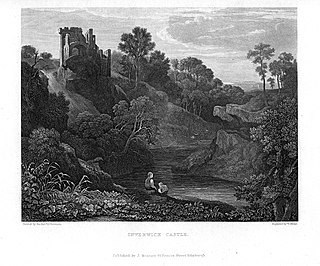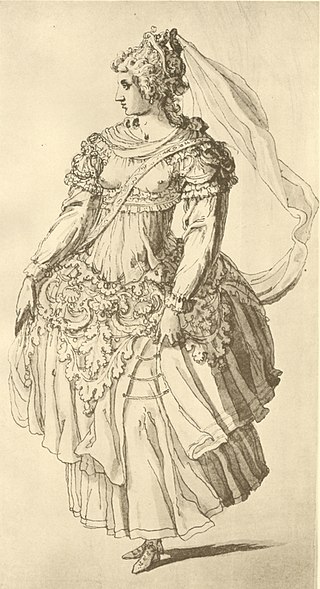Related Research Articles

Lionel Cranfield, 1st Earl of Middlesex was an English merchant and politician. He sat in the House of Commons between 1614 and 1622 when he was raised to the peerage as Baron Cranfield.
Jean Ker, Countess of Roxburghe, néeDrummond (c.1585–1643) was a Scottish courtier, serving Anne of Denmark in Scotland and England.

Robert Peake the Elder was an English painter active in the later part of Elizabeth I's reign and for most of the reign of James I. In 1604, he was appointed picture maker to the heir to the throne, Prince Henry; and in 1607, serjeant-painter to King James I – a post he shared with John De Critz.
Sir John Spilman was a Lindau, German-born entrepreneur who founded the first commercially successful paper-mill in England, establishing a factory on the River Darenth in Dartford, Kent in 1588. Spilman was also jeweller to Queen Elizabeth I, and was knighted by King James I.
Simon Basil was an English surveyor or architect, who held the post of Surveyor of the King's Works, 1606-15.
Leonard Fryer or Frier was an English artist who served the royal court, primarily as a decorative painter.
Sir William Herrick or Hericke was an English jeweller, courtier, diplomat and politician who sat in the House of Commons at various times between 1601 and 1622.
Dorothy Silking was a Danish courtier, one of the chamberers in the household of Anne of Denmark.
Abraham Harderet, goldsmith and jeweller to Elizabeth I of England and Anne of Denmark

Cornelius de Vos or de Vois or Devosse, was a Dutch or Flemish mine entrepreneur and mineral prospector working in England and Scotland. He was said to have been a "picture-maker" or portrait artist. De Vos is known for gold mining in Scotland and founding saltworks at Newhaven near Edinburgh.

Jacob Kroger, was a German goldsmith who worked for Anne of Denmark in Scotland and stole her jewels.

James Maxwell, 1st Earl of Dirletoun was a Scottish courtier and landowner, and Black Rod. He was involved in selling royal jewels.
Sir Francis Gofton was an English courtier and administrator. He was an auditor of royal accounts and jewels, Chief Auditor of the Imprest from 1597 and Auditor of Mint from August 1603. Gofton acquired the manor of Heathrow, and houses in Stockwell and West Ham. He was often called "Auditor Gofton". The surname is frequently transcribed as "Goston" or "Guston"

The jewels of Anne of Denmark (1574–1619), wife of James VI and I and queen consort of Scotland and England, are known from accounts and inventories, and their depiction in portraits by artists including Paul van Somer. A few pieces survive. Some modern historians prefer the name "Anna" to "Anne", following the spelling of numerous examples of her signature.

The coronation of James I and his wife Anne as King and Queen of England and Ireland was held on 25 July 1603 at Westminster Abbey. James had reigned as King James VI of Scotland since 1567. Anne was anointed and consecrated with prayers alluding to Esther, the Wise Virgins, and other Biblical heroines. It was the first coronation to be conducted in English instead of Latin. Because of the 1603 London plague, a planned ceremonial Royal Entry to London was deferred until 15 March 1604.

Christopher Shawe or Shaw was an English embroiderer and textile artist who worked on masque costume for Anne of Denmark. He was a member of the Worshipful Company of Broderers.
Oliver Browne was a London upholsterer and furniture maker in the 17th century who worked for aristocrats and the royal court. His business partners included John Baker, another upholsterer or "upholder", who worked for the royal family. Baker was "upholster" to James VI and I and Prince Henry, and had supplied items for the coronation of James I and Anne. Baker's son, also John Baker, continued the business after the Restoration.

Anne of Denmark (1574–1619) was the wife of James VI and I, and queen consort of Scotland from 1589, and queen consort of England and Ireland from the union of the Scottish and English crowns in 1603 until her death on 2 March 1619 at Hampton Court. She was buried at Westminster Abbey on 13 May.
Benjamin Henshawe (1585–1631) was a London merchant tailor and silkman who supplied fabrics and passementerie for costume and furnishings for the royal court. His widow, Anna Henshawe, continued in business with William Geere.
Ralph Grynder or Grinder was a London-based furniture maker and upholsterer who worked for Charles I of England and Henrietta Maria. He bought and sold art treasures from the Royal Collection in 1651.
References
- ↑ Edward Town, 'A Biographical Dictionary of London Painters, 1547–1625', Walpole Society, 76 (London, 2014), p. 50.
- ↑ Calendar State Papers Domestic (London, 1856), no. 28, TNA SP 12/125 f.59.
- ↑ Edward Town, 'A Biographical Dictionary of London Painters, 1547–1625', Walpole Society, 76 (London, 2014), p. 51.
- ↑ Mary Anne Everett Green, Calendar State Papers Domestic, James I: 1619-1623 (London, 1858), no. 73: TNA SP14/107 f.106r.
- ↑ Joseph Foster & Joseph Lemuel Chester, London Marriage Licences, 1521-1869 (London, 1887), p. 1211: Calendar of State Papers Domestic: Charles I, 1640-1 (London, 1882), no. 11.
- ↑ HMC Salisbury Hatfield, vol. 21 (London, 1970), p. 287: CSP Domestic, James I: 1603-1610 (London, 1857), p. 656 no. 12: TNA SP14/59 f.14.
- ↑ Jessica L. Malay, Anne Clifford's Autobiographical Writing, 1590-1676 (Manchester, 2018), p. 91.
- ↑ Howard Colvin, The History of the King's Works, 4:2 (London: HMSO, 1982), p. 142.
- ↑ Edward Town & Olivia Fryman, 'A rich inheritance: Lionel Cranfield's legacy at Knole', National Trust Historic Houses and Collections Annual, Apollo (2016), pp. 35-7
- ↑ Edward Town, 'A Biographical Dictionary of London Painters, 1547–1625', Walpole Society, 76 (London, 2014), p. 51.
- ↑ HMC Rutland, vol. 4 (London, 1904), p. 519.